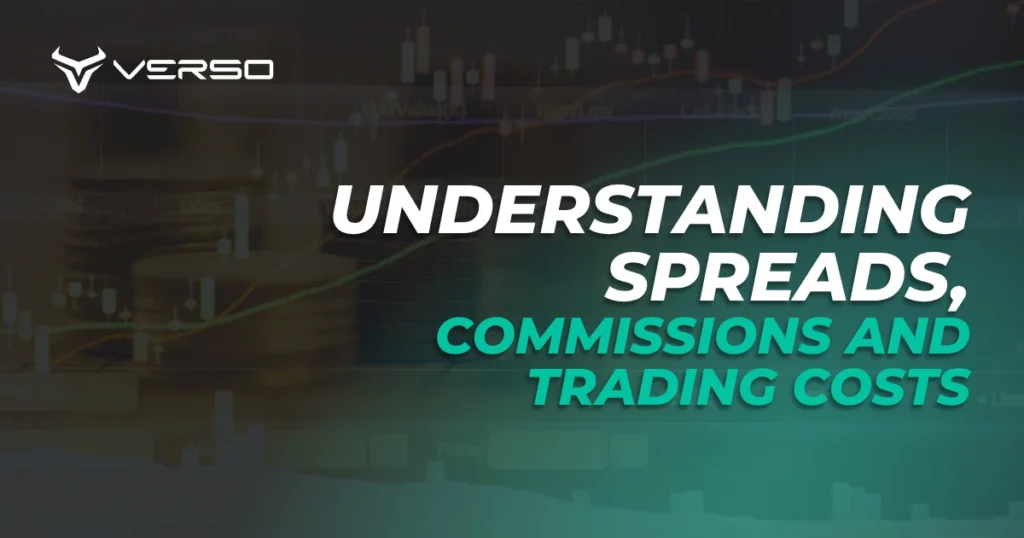
Overview of Spreads vs. Commissions
Every market quote includes two prices: the bid (price at which one can sell) and the ask (price at which one can buy). The difference between them is the spread. Buying enters at the ask, selling at the bid—this gap represents an immediate cost, because the position starts slightly out of the money. This is the price for accessing liquidity.
A commission is an additional fee charged by the broker. Some accounts feature narrow spreads but charge commissions on entry and exit. Others embed broker fees into a wider spread without explicit commission. Regardless of terminology, what matters is the total cost per trade.
Fixed vs. Variable Spreads
- Fixed Spreads remain constant regardless of market conditions. Their main advantage is predictability: costs are known in advance. The trade-off is that they may be wider than the tightest spreads available during high liquidity periods.
- Variable (Floating) Spreads fluctuate with market conditions. In calm, liquid periods, variable spreads tend to be tighter; during thin liquidity or volatile events (such as around news releases), they can widen significantly.
Selecting between fixed and variable spreads depends on trading style. For markets and instruments with consistent liquidity, variable spreads tend to offer lower cost. For trading around major news or during low-liquidity windows, fixed spreads may provide protection against sudden cost spikes.
Total Cost of Trading
Headline claims like “zero spread” or “no commission” can be misleading if they ignore all cost components. The true cost of trading includes:
- The typical spread during trading sessions.
- Broker commissions for both entry and exit.
- Slippage—because fills in real markets are rarely perfect.
- Overnight financing (swap or rollover), if a position is held past the daily cutoff.
When comparing account types (standard vs raw/ECN), it is useful to calculate costs using actual trading hours, pairs, and trade sizes. Raw/ECN accounts may have tiny spreads plus commission, and often prove cheaper for frequent traders. Less active traders might find standard accounts with wider spreads but no commission competitive, especially if holding overnight.
ECN vs. Market-Maker Accounts
- ECN/Raw Accounts link to market-like pricing, offering tighter spreads but often charging commission. These are well suited for scalpers and day traders who execute frequently and require tight spreads during high liquidity periods.
- Market Maker/Standard Accounts provide simpler fee structures by incorporating broker compensation into the spread. They often charge no explicit commission. These accounts may be more appropriate for traders who trade less frequently or value consistency and simplicity.
A low or zero spread does not guarantee the lowest overall cost. Execution during volatile periods, commission fees, and slippage can all affect outcomes. The full cost must be evaluated across all conditions.
Impact of Volatility, News and Timing
- Spreads expand when liquidity decreases, such as during session changes or late trading hours. Major economic releases and unexpected announcements can cause rapid spread widening.
- Key protections include trading during periods known for high liquidity, avoiding trades immediately before or after significant announcements, and reducing trade size or standing aside when spreads widen abnormally.
- Order type choices matter: limit orders can define maximum acceptable costs, though they cannot remove risk of slippage entirely.
Incorporating Real Costs into Backtesting
- Backtests should reflect real trading costs. Too often, simulations assume tight spreads, no commissions, and ideal fills.
- Effective backtesting involves:
• Setting realistic commissions per side.
• Simulating spreads matching actual trading hours.
• Including a slippage allowance.
• Accounting for swap/overnight financing if positions cross cutoff. - Comparing backtest outputs with real trading statements or trade journals helps validate assumptions. If live costs exceed modeled ones, adjustments should be made.
Common Mistakes & How to Avoid Them
| Mistake | Correction |
|---|---|
| Assuming tight spread always means lowest cost | Examine the full cost: commission + slippage + other fees |
| Ignoring overnight swaps for positions held past rollover time | Track swap rates for relevant pairs and directions; assess whether holding overnight is worthwhile |
| Backtesting with ideal conditions only | Use more conservative estimates for spread and slippage in backtesting |
| Choosing brokers based on advertised spreads only | Test during actual trading hours and on actual pairs; monitor average spread and execution performance |
Practical Checklist
Evaluate monthly which cost components (spread, commission, slippage, swap) hurt most, and adjust strategy: change hours, adjust size, or refine trade selection.
Identify the specific pairs and trading hours used; record typical spreads during those windows.
Compute total cost per trade: spread + commission + realistic slippage + overnight financing when applicable.
Select the account type that minimizes cost for your trade frequency and order sizes.
Avoid trading during known cost-elevating events (major news, low liquidity) unless such events are part of the strategy.
Include all realistic cost assumptions in backtesting, and track them in live trading.

